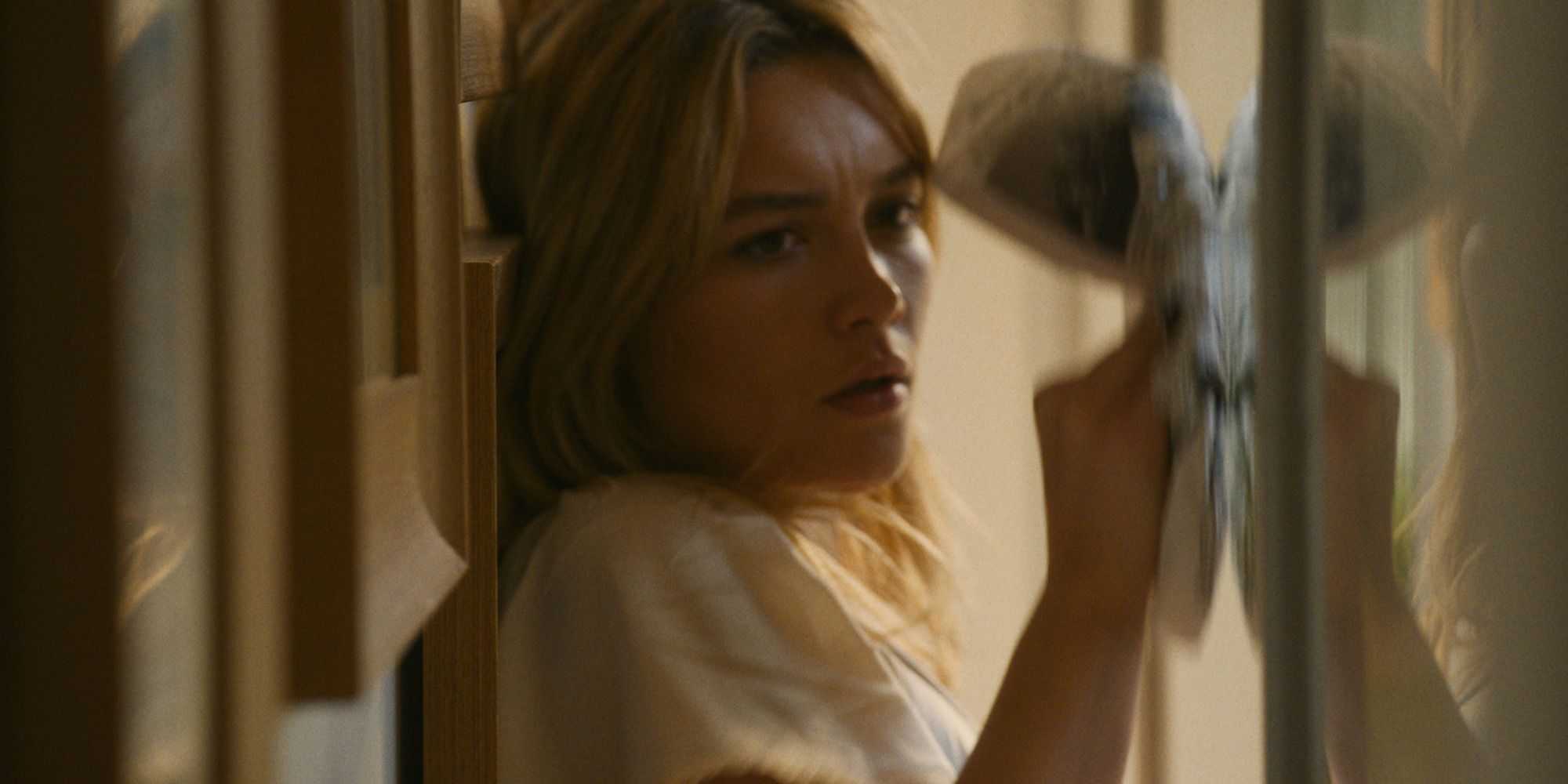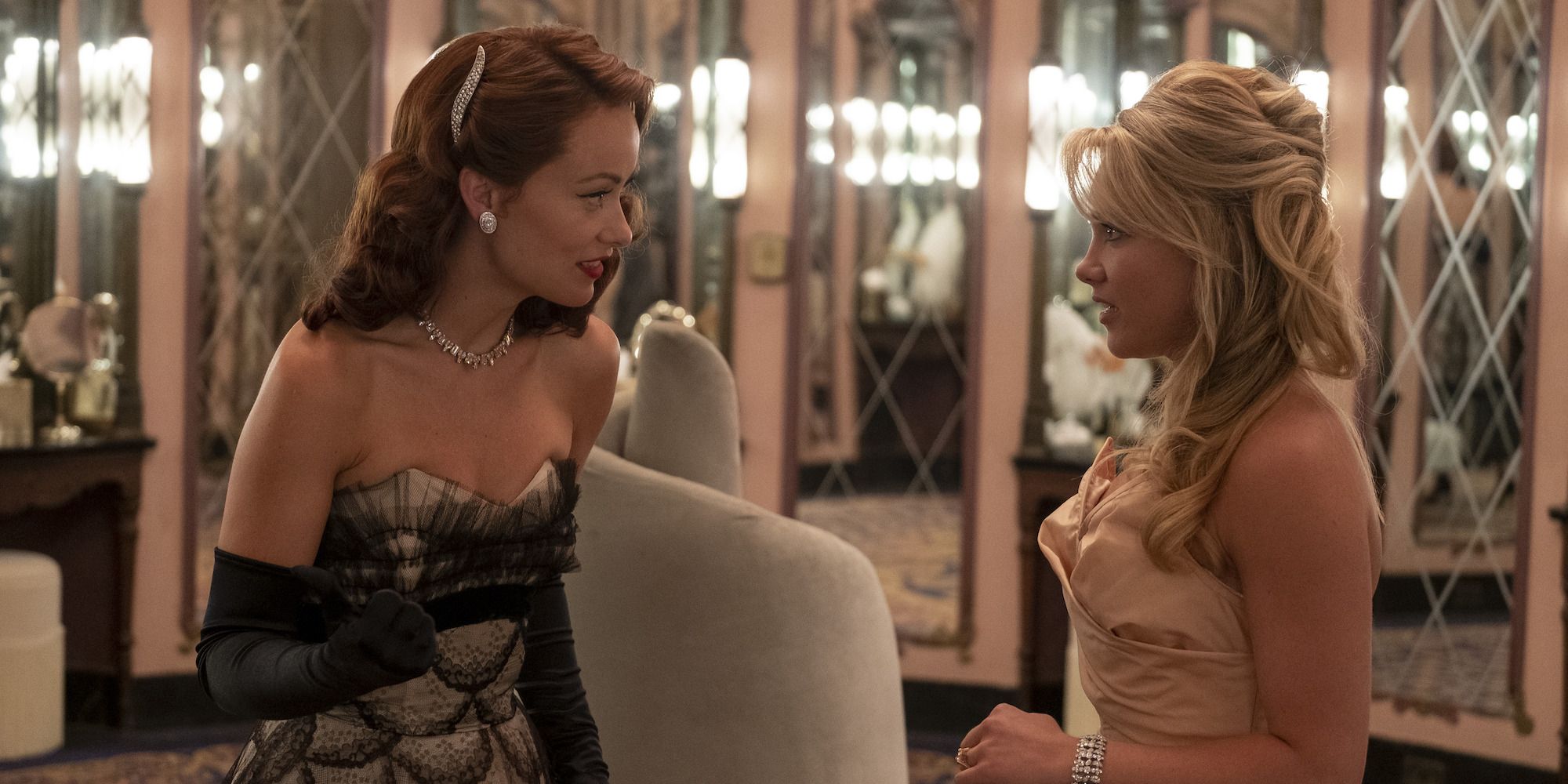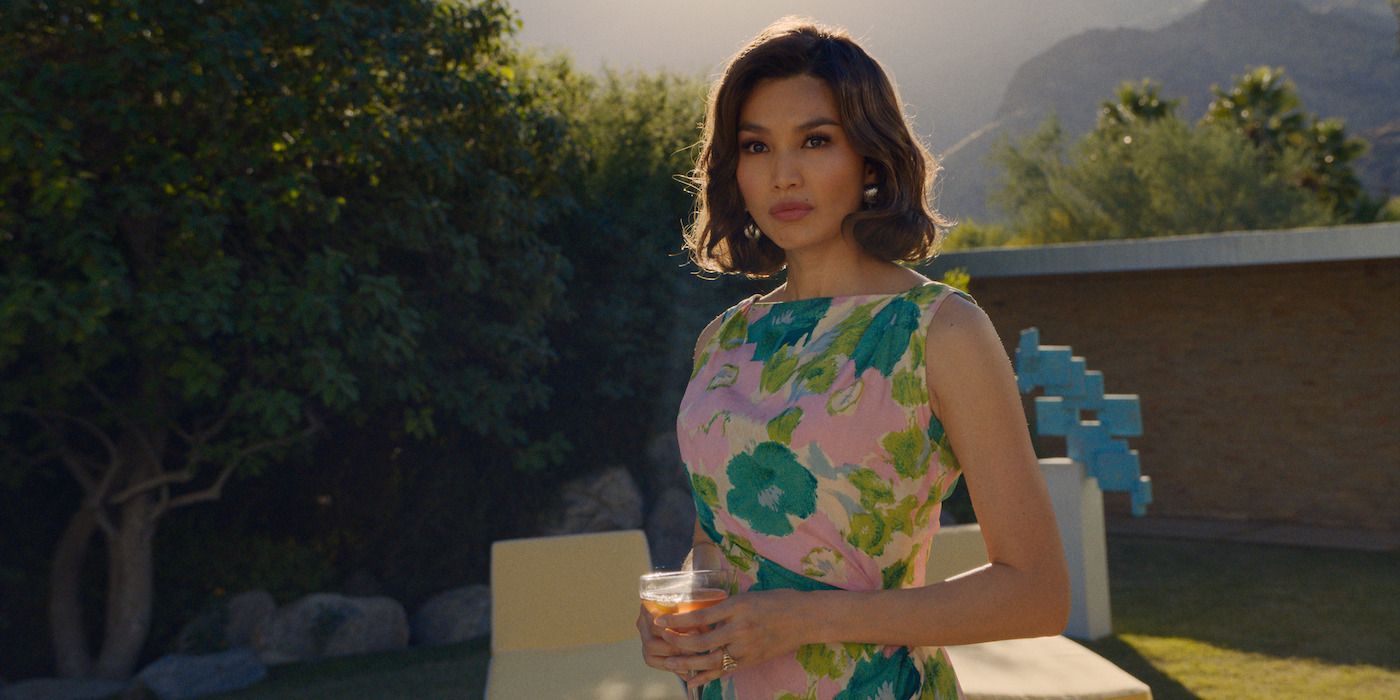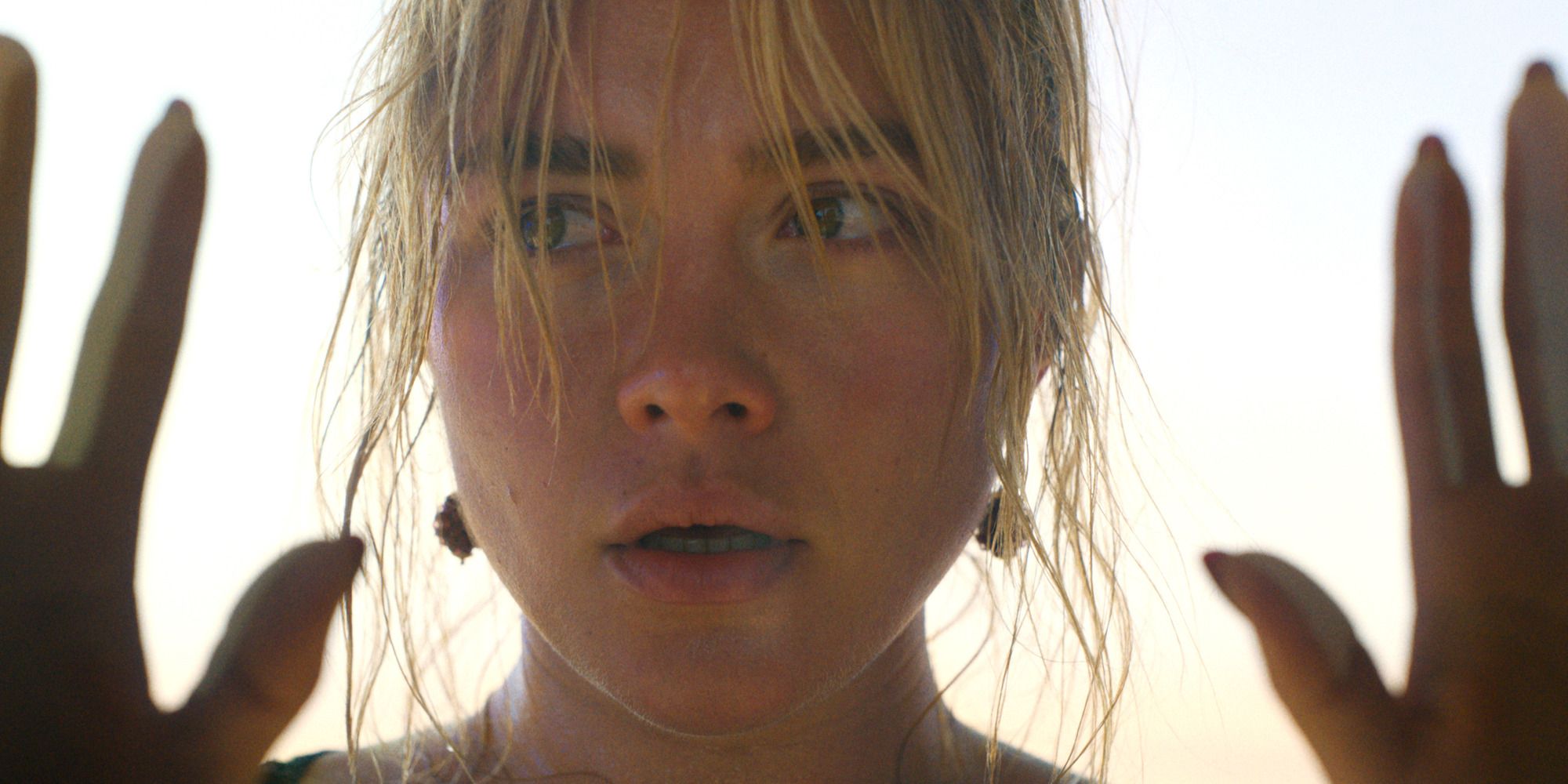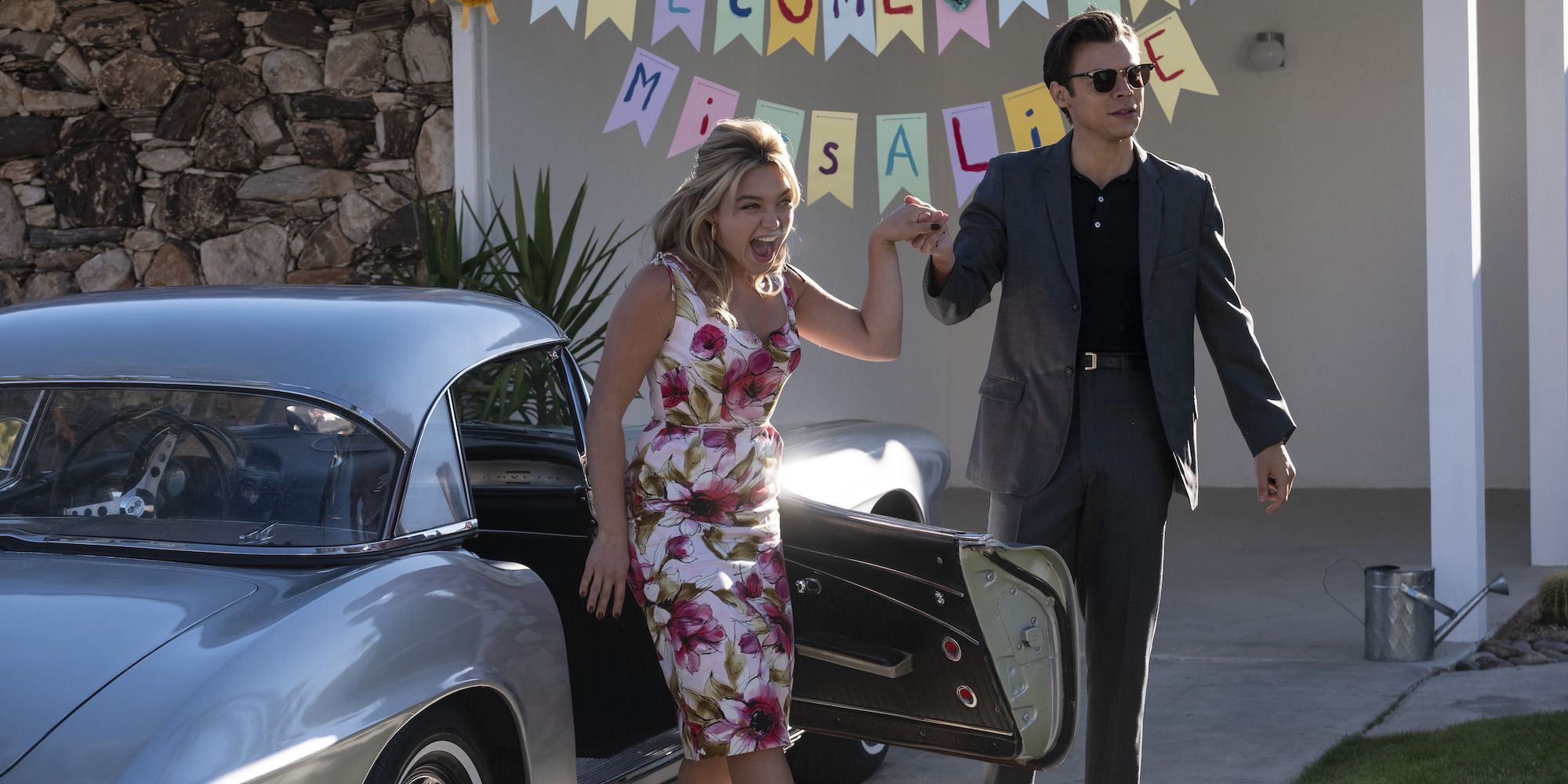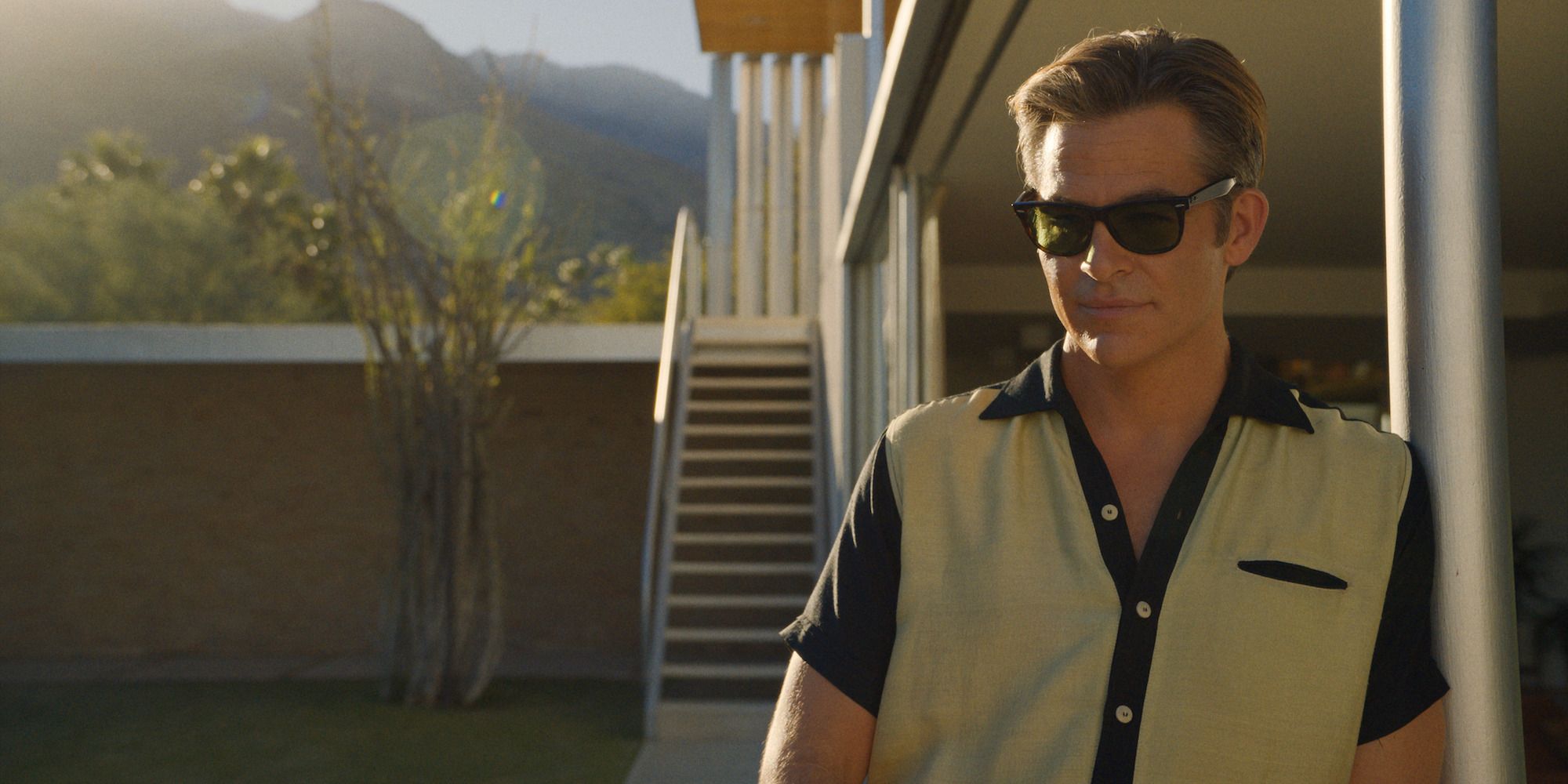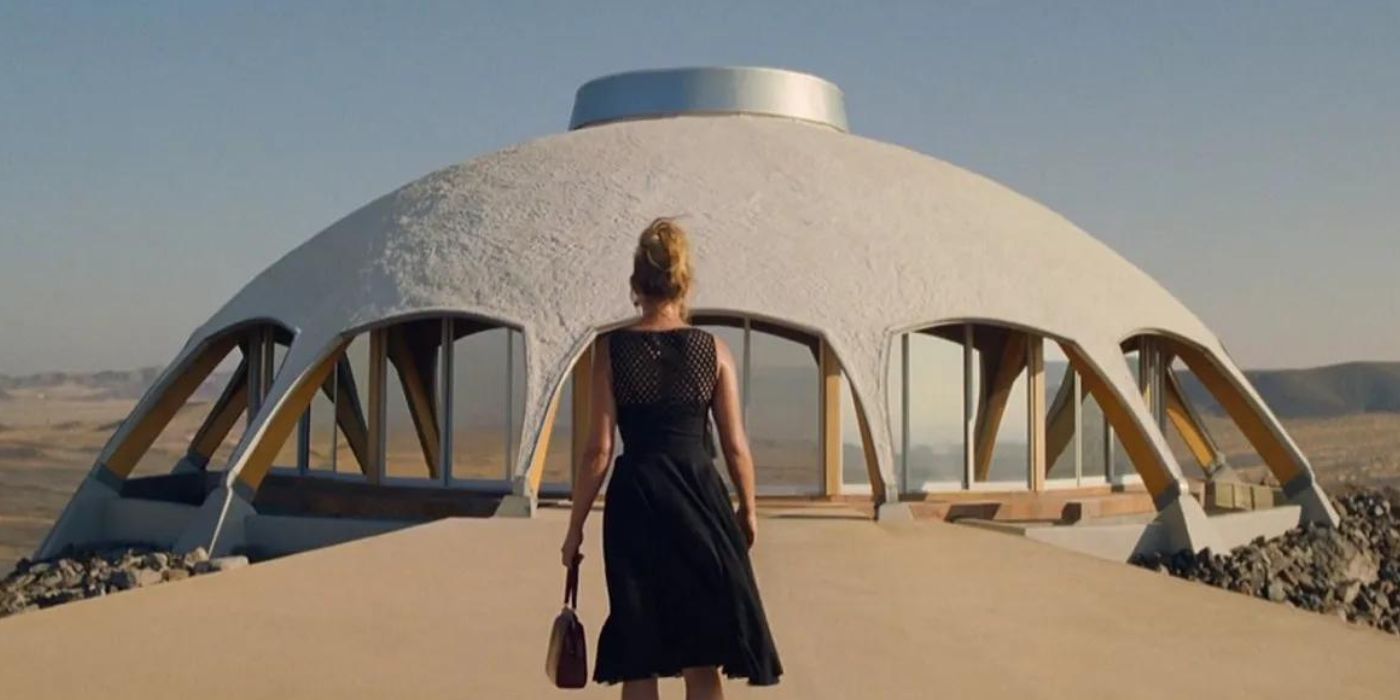Don’t Worry Darling Ending Explained (In Detail)

Summary
- Alice’s visions throughout
Don’t Worry Darling
reveal the false reality she’s trapped in, leading to her escape from the Victory Project simulation. - Bunny dismisses Alice’s concerns to preserve her own false life within the system, mirroring patriarchal control dynamics.
- Shelley’s unexpected betrayal of Frank hints at her deeper involvement in the Victory Project, potentially as the true mastermind.
Warning: This post contains spoilers for Don’t Worry DarlingDon’t Worry Darling has a complex sci-fi premise full of twists, with an ending that contains a lot of depth when analyzed. Directed by Olivia Wilde, from a screenplay by Katie Silberman, Carey Van Dyke, and Shane Van Dyke, Don’t Worry Darling follows Alice Chambers (Florence Pugh), a 1950s housewife who lives in a wholesome and idyllic community with her husband Jack (Harry Styles), who works for the mysterious “Victory Project” headed by Frank (Chris Pine).
The Don’t Worry Darling twist sees Alice realize what Jack has done to her — involuntarily placing her inside a virtual reality that takes away the control she had over her own life — then kills her husband and attempts to escape the Victory Project simulation. By the end of Don’t Worry Darling, Alice seemingly returns to the real world, free of Frank and the Victory Project at last. The film ends ambiguously, and though Alice seemingly escapes, there is plenty to dissect in the psychological thriller where not everything is answered.
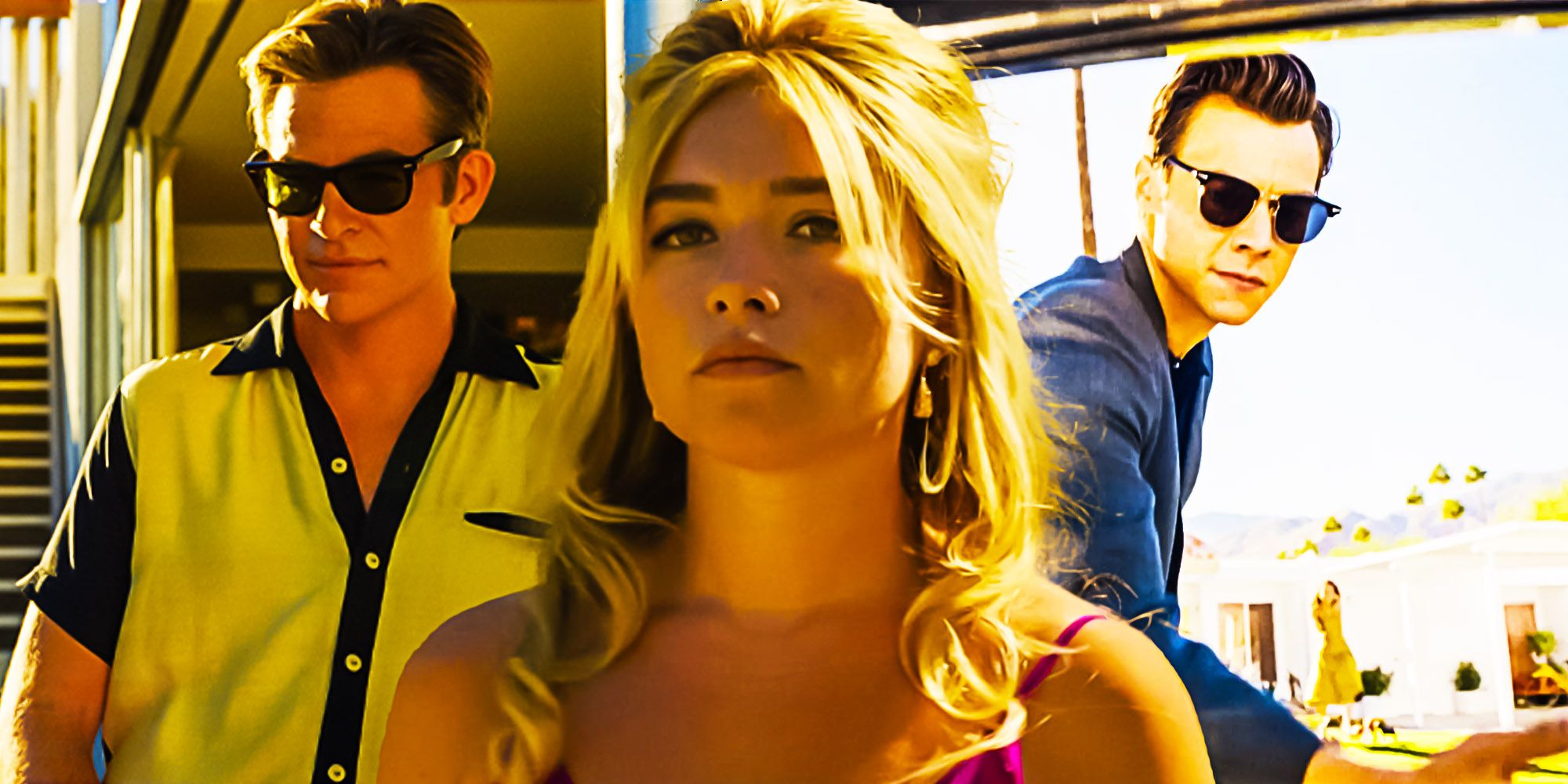
Related
Don’t Worry Darling Cast & Controversy Guide
Olivia Wilde’s second directorial film, Don’t Worry Darling is remembered for its many behind-the-scenes controversies, but it boasts a talented cast.
What Triggers Alice’s Visions & Why She Keeps Having Them
The Surreal Signs Are How Alice Comes To Accept Her Reality As False
Throughout Don’t Worry Darling, Alice has visions — of women dancing, of herself drowning, of Margaret trying to shatter glass — that only intensify as the film goes on. At the start, Alice is perfectly content living her life, going through the same monotony every day. It seems as though Frank’s conditioning, as well as Jack’s hold on Alice in the outside world, is working because Alice is none the wiser.
However, the visions fully take hold of Alice after a run-in with Margaret (KiKi Layne), who is the first to openly question what is happening and their seemingly perfect surroundings. The other women are quick to ignore Margaret, but Alice is more intuitive, which makes sense considering she is a doctor in reality.
Alice’s visions not only continue but become harder to ignore. It’s possible she keeps having the visions because the seed of doubt is planted early on. Once that takes hold, Alice finds it difficult to shake it off and carry on as though nothing is wrong. She is not so quick to dismiss her feelings of unease, as her mind is opening up to the realization that what she is seeing is affecting her mental state and clueing her to the fact that she is being duped.
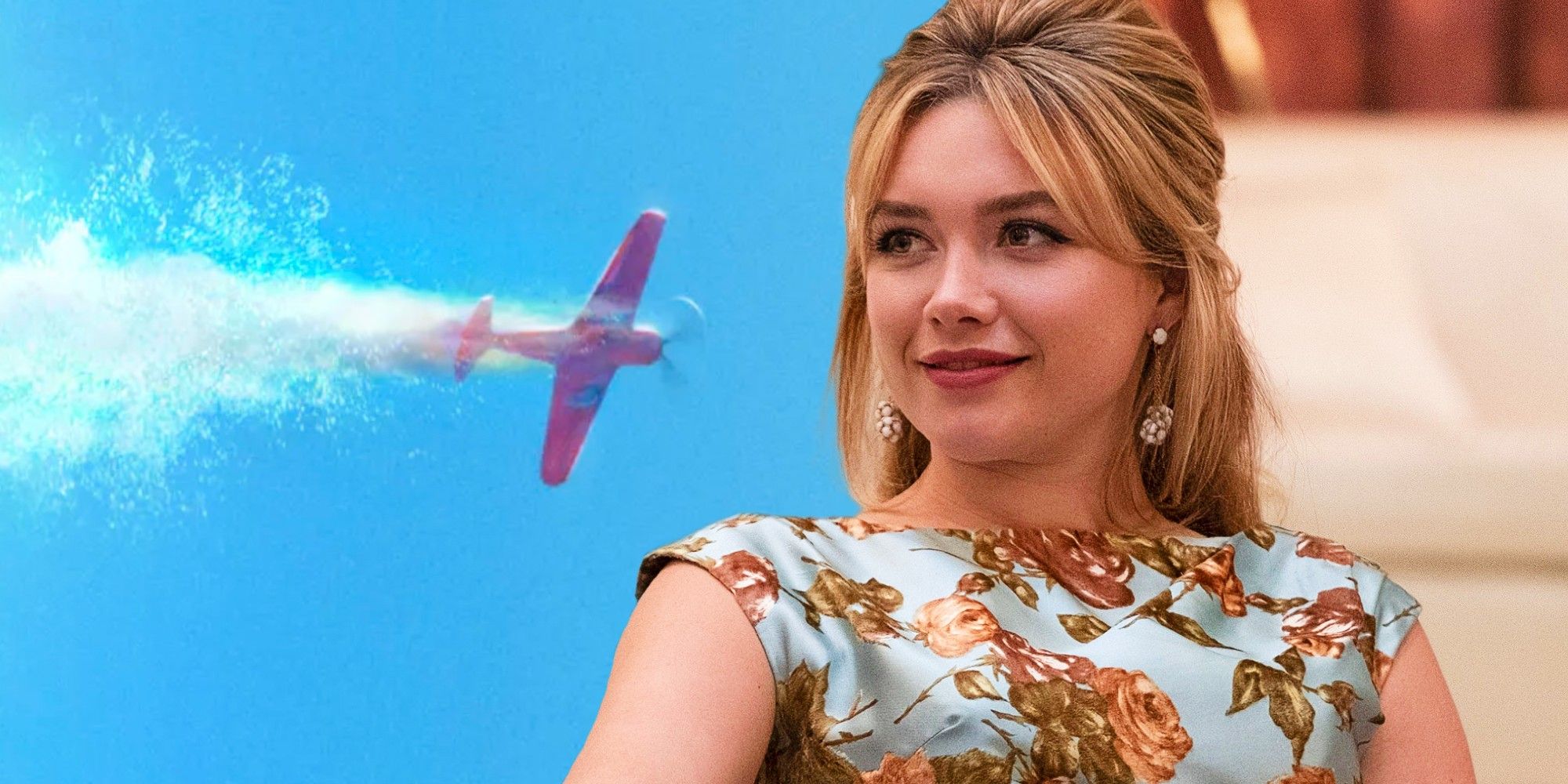
Related
What Was The Plane In Don’t Worry Darling?
Florence Pugh’s Alice sees a mysterious red plane crash in Don’t Worry Darling. Was it a real plane or another one of her hallucinations?
Why Bunny Was Dismissive Of Alice’s Concerns (When She Knew The Truth)
Bunny Was Happy Living In A False Reality
The Don’t Worry Darling ending explained that Bunny also knew the Victory Project wasn’t real. In fact, she chose to be a part of the project and was not subjected to it like Alice was. It’s possible Bunny tried to shut down Alice’s concerns because she didn’t want to lose the life she had built for herself, which included two children to replace the ones she lost in the real world. After all, if Alice realized what was going on, she would have (much like Margaret) tried to prove that the Victory Project’s world was not real. This could have fueled a bigger rebellion.
Bunny making Alice seem like she is mentally troubled speaks to the systemic way in which some women contribute to maintaining the patriarchy. Bunny gaslights Alice just like Styles’ Jack and Chris Pine’s Frank do. The Don’t Worry Darling ending explains that Bunny doesn’t want Alice stepping out of line or rocking the boat because it risks shaking up the status quo that benefits her.
The same goes for Shelley, who will forcibly keep the other women in their place if it means she gets to maintain some sort of power. It’s a vicious cycle and a lesson that women can also play a role in upholding systemic inequalities and roles.
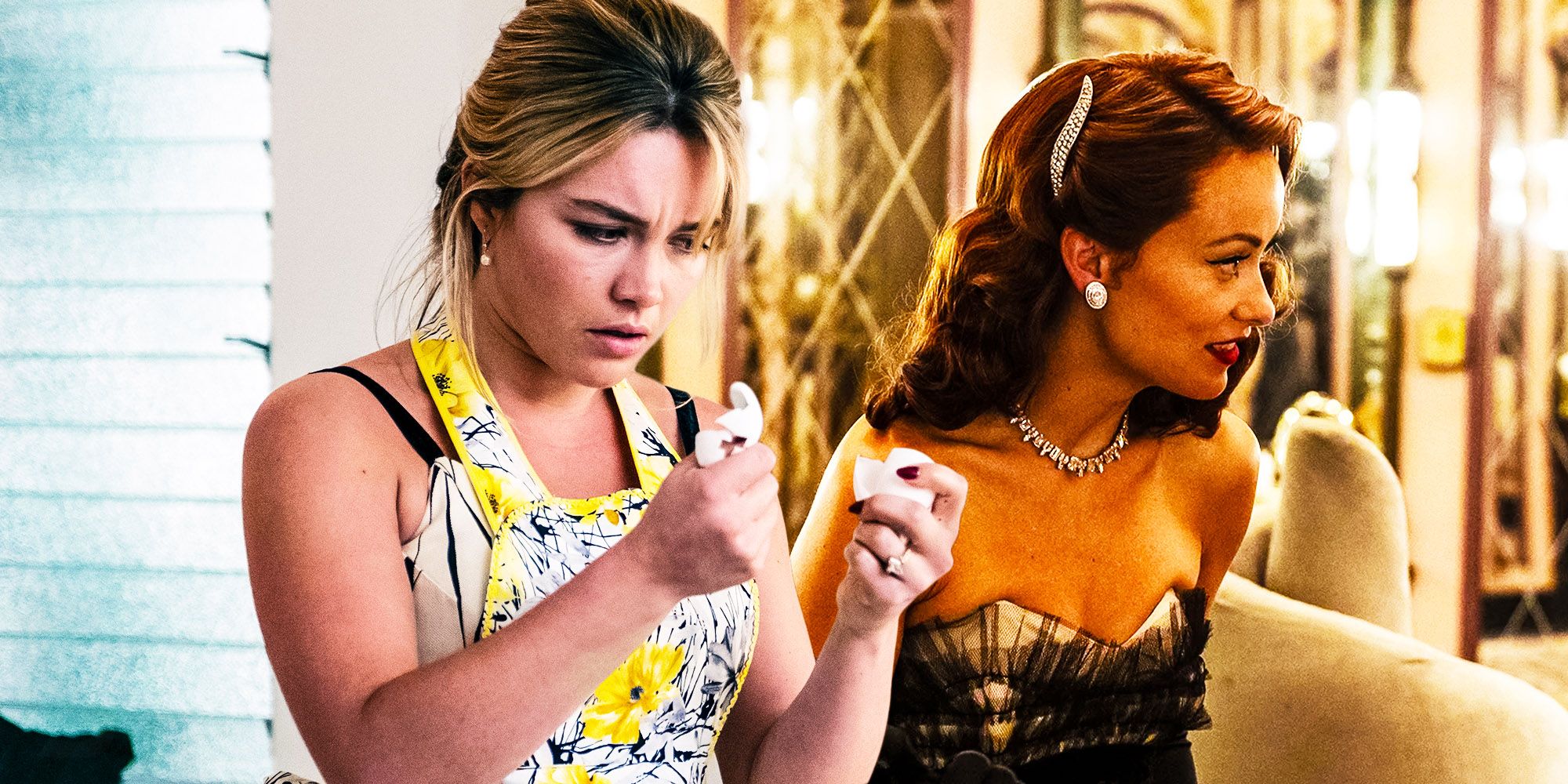
Related
Don’t Worry Darling Set Up The Perfect Sequel (Without Florence Pugh)
Don’t Worry Darling set up the perfect sequel to Olivia Wilde’s movie that doesn’t need Florence Pugh. But will Don’t Worry Darling 2 happen?
Why Shelley Stabbed Frank Following Alice’s Escape
Shelley May Have Been Behind Victory Project All Along
Shelley is a wildcard throughout Don’t Worry Darling. She seems to act like the other dutiful wives, supporting Frank in his work and ambitions, content to sit on the sidelines instead of digging deeper. For a long while, her actions suggest she is just as trapped as the other women.
However, Gemma Chan’s character surprises audiences when she stabs Frank. It seems abrupt considering she is also trying to keep Alice from questioning the Victory Project and the community. But the Don’t Worry Darling ending explained that Shelley was tired of playing second fiddle to Frank.
It’s possible that Shelley was playing the role of a dutiful wife while allowing Frank to openly have power so that no one would question her. However, Shelley may have been the true mastermind behind the Victory Project. Conversely, she could have been tired of the way things were run and believed she could do a better job.
Stabbing Frank effectively takes him out of the equation and puts her in the leading, and most powerful, position in the simulation. Getting rid of Frank means Shelley can do whatever she likes moving forward with the Victory Project without being questioned or having her husband stand in her way.
Alice Escapes Victory Project
While The Ending Is Ambiguous, It’s Likely Alice Found A Way Out
The Don’t Worry Darling ending could be considered as ambiguous as Christopher Nolan’s Inception. Yes, Alice gets to the simulation’s headquarters and puts her hands on the glass in the same way she did previously — an incident that is confirmed to have taken her out of the Victory Project and returned her to the real world. However, the Don’t Worry Darling ending explains little, with the audience questioning whether Alice actually escaped because she is never shown opening her eyes in bed.
A quick scene showcases Alice, free and happy, dancing in her home. She is alone, which suggests Jack is truly gone. However, considering the brainwashing images still make an appearance, it’s also possible the final scene is but a memory of better and happier days. It could be the programming was so intense that Alice is stuck in limbo.
Alice might even have been able to escape the simulation, but, having been bound to her bed for who knows how long, was unable to fully tear herself away. Nevertheless, the Don’t Worry Darling ending suggests that Alice did escape and went on to have control over her mind, body, and life choices. Alice dancing so freely and passionately points to a true happiness she was unable to achieve within the simulation.
What Don’t Worry Darling’s Ending Really Means
Gaslighting Is An Essential Theme
Don’t Worry Darling has something to say about gaslighting, body autonomy, patriarchal control of women, and the perception of happiness. No one believes Alice throughout the film, and even she is hesitant about Margaret’s claims. Ultimately, Alice’s actions showcase how one should continue to fight for the right to control what happens to one’s own body. She wants to choose what she does with her life instead of having choices pushed on her by Jack.
Don’t Worry Darling is all about showcasing the way in which women are trapped in a world that doesn’t support them, believe them, or wish to see them have control or power. Bunny and Shelley both, in their own ways, uphold systemic inequality because it benefits them.
Don’t Worry Darling also reveals the different perceptions of happiness and how toxic one can be over the other. For Jack, living in a world where Alice was under his thumb and was focused solely on him and his happiness was ideal. That wasn’t the case for Alice, whose voice in the matter was revoked. The Don’t Worry Darling ending explained the idea that women should have a right to choose their own happiness, no matter what form that comes in, as well as what they do with their lives.
The Truth About The Victory Project
The Simulated Reality Is To Live Out Patriarchal Fantasies
The ending of the movie explains that the 1950s backdrop is all an illusion, and the Don’t Worry Darling Victory Project is a simulated world. Crafted by Frank in the real world, the Victory Project serves as an escape mechanism, offering individuals a chance to lead lives where they hold the reins. Frank targets men discontented with their usual existence, luring them with the prospect of becoming the ultimate provider for their spouses. T
hey do this by keeping their other halves in the simulation, and when the husbands go to work in the 1950s illusion, they’re actually leaving the simulation to attend to the women’s health in the real world. Within this faux reality, the Victory project acts as a smokescreen, which allows men to keep the secret about the simulation and ensures that women refrain from questioning what’s going on.
Frank used a podcast to attract followers and immerse them in this simulated realm. The Victory Project is essentially a representation of a patriarchal society that decides which roles women should take on, with the characters falling back into a false idealized world where women remain at home and have no true rights.
The Original Don’t Worry Darling Ending
Originally, Alice Awakens In 2050
In the original Don’t Worry Darling ending, Alice stumbles upon a portal, awakening in 2050 attached to a simulation machine. Discovering Jack had faked her death due to their imminent divorce, she learns they’re in All-Life, the Victory Project’s equivalent. It’s revealed that Jack deceived her into this simulation, and though Alice tries hiding her discovery, Jack senses her awareness and then attempts shock therapy. Alice outsmarts him, forcing a confession in which he reveals that he hoped the simulation would repair their relationship.
The couple then get into an altercation, which results in Jack getting fatally wounded and Alice being institutionalized. The original ending leaves viewers with a cliffhanger, as Alice discovers another portal in the psychiatric ward. The film ends as Alice walks toward the portal.
The changes to the Don’t Worry Darling ending were made by Oliva Wilde and writer Katie Silberman after Wilde acquired the rights to the spec script. Silberman added the Frank character, renamed Alt-Life to The Victory Project, and gave the narrative a more female-centric viewpoint, along with changing the movie’s conclusion.
How The Don’t Worry Darling Ending Was Received
The Film’s Final Act May Have Let It Down
While it’s certainly an intriguing sci-fi movie, critical response to Don’t Worry Darling was mixed, and the ending does seem to get mentioned more than once among the less-favorable write-ups. Many found that the twists weren’t all that surprising, and that the overall premise and story felt like it had already been done (by movies like, for example, The Truman Show, or even shows like Black Mirror).
Not every review was negative though, and even among those from critics who didn’t get on with Olivia Wilde’s 2022 sci-fi thriller found more than a few positives. Florence Pugh’s performance was notably praised, as was the incredible cinematography present throughout Don’t Worry Darling. The general consensus does seem to be that the movie is a case of style over substance, and while there are some intriguing ideas throughout, the narrative doesn’t quite weave them together as well as it could.
The ending of Don’t Worry Darling definitely plays into this, with the movie struggling to find an impactful enough payoff once the grand reveal that Alice is in a false reality has arrived. The ambiguity around certain points and the questions this raised definitely helped Don’t Worry Darling in several ways, as it added a bit of cerebral depth that allowed many viewers to look past the faults many critics took chagrin with.
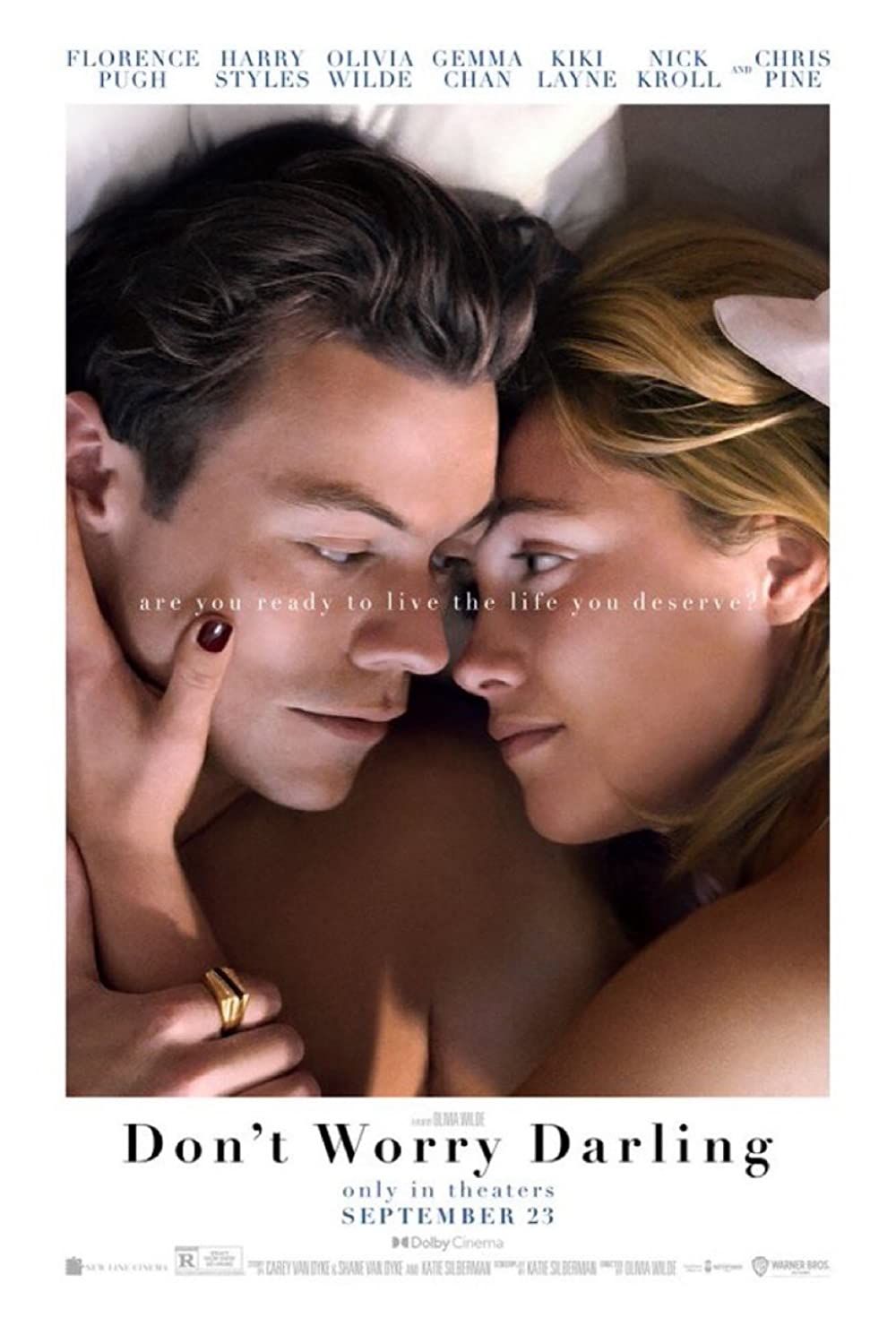
Don’t Worry Darling
In Don’t Worry Darling, a young married couple are lucky enough to live in Victory, an experimental town created to house the workers and families of the top-secret Victory Project. Life is perfect, with every resident’s needs met by the company. All they ask in return is an unquestioning commitment to the Victory cause. But soon, cracks in their idyllic life appear, exposing flashes of something much more sinister lurking beneath the attractive façade.
- Director
- Olivia Wilde
- Release Date
- September 22, 2022
- Writers
- Katie Silberman , Carey Van Dyke , Shane Van Dyke
- Runtime
- 2h 2m

